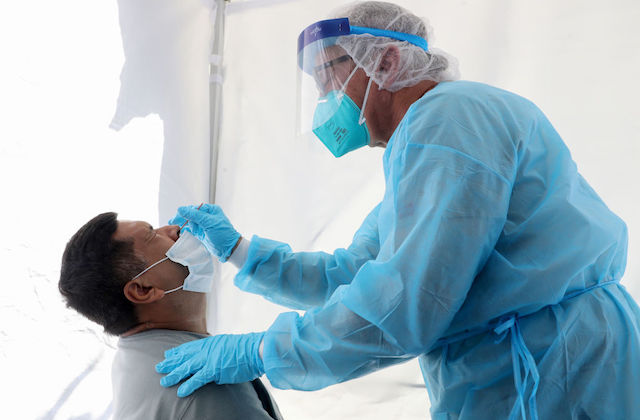While much of the reporting on the racial and ethnic disparities of COVID-19 deaths focus on Black and Latinx people in the United States, in California there is another group that has been hit even harder: Pacific Islanders.
With more than 1,400 infections out of an estimated 317,000 Pacific Islanders, the community is more susceptible than most due to a combination of cultural norms and socioeconomic realities. According to The Los Angeles Times:
In L.A. County, Pacific Islanders suffer the highest infection rate of any racial or ethnic group, more than 2,500 per 100,000 residents. That’s six times higher than for white people, five times higher than for Black people and three times higher than for Latinos, according to county health demographic data that exclude Long Beach and Pasadena, which have their own health departments.
[…]
Their statewide infection rate is three times higher than that of white Californians, and 20 percent higher than Latinos’ infection rate, while their death rate is nearly 60 percent higher than that of white people but lower than that of Black residents.
The reasons behind these numbers are both economic and cultural. As with Black and Latinx people, the LA Times reports that higher rates of poverty compared to whites, coupled with reduced access to healthcare and high incidence of underlying health risks (including diabetes and heart disease).
“Sadly, these disparities are consistent with other health disparities we see and reflect deeply rooted and pervasive inequities in our society that are in part fueled by racism, xenophobia, and a lack of opportunities and resources to support optimal health,” Natalie Jimenez, a spokesperson for the L.A. County Department of Public Health, said to The Times.
Beyond these conditions, there are also reasons specific to Pacific Island culture that may explain the spread of the virus. It is common for families to live in homes with multiple generations. According to the newspaper, “Many Pacific Islanders also work in frontline jobs, such as food service, hospitality and healthcare, where they are more likely to contract the virus and bring it home.”
There is also the tradition of having gatherings—from birthdays to funerals—that are quite large. In addition, The Times reports, some religious leaders have not closed their churches or enforced masks and social distancing. Finally, community leaders say that there is shame attached to contracting the illness.
“The shame factor of it is real,” endocrinologist Dr. Raynald Samoa told The Times. “People are not getting their families tested. They’re not speaking out, they’re not getting identified because they’re afraid that they’re going to have to stay home from work or that it’s going to negatively impact their family.”
To address the disparity in numbers, measures are now being taken that can more adequately address the needs of Pacific Islanders. This includes educational graphics in the Tongan, Samoan, Chamorro and Marshallese languages that will be posted on social media and photographs of Pacific Islander families wearing masks.
Yet for these actions to be effective, they must be able to mitigate the risks that come with the state reopening, says Alisi Tulua, a program manager with the Orange County Asian and Pacific Islander Community Alliance, to The Times.
“Our community is back to work and more exposed. So it’s going to be twice as hard to quarantine and try to get tested. While it’s flattening for other people, it’s still climbing in our community. If we bring it home, maybe we’re OK, but our parents will suffer. And if we’re not careful, we’re going to kill off a whole generation of our people.”
